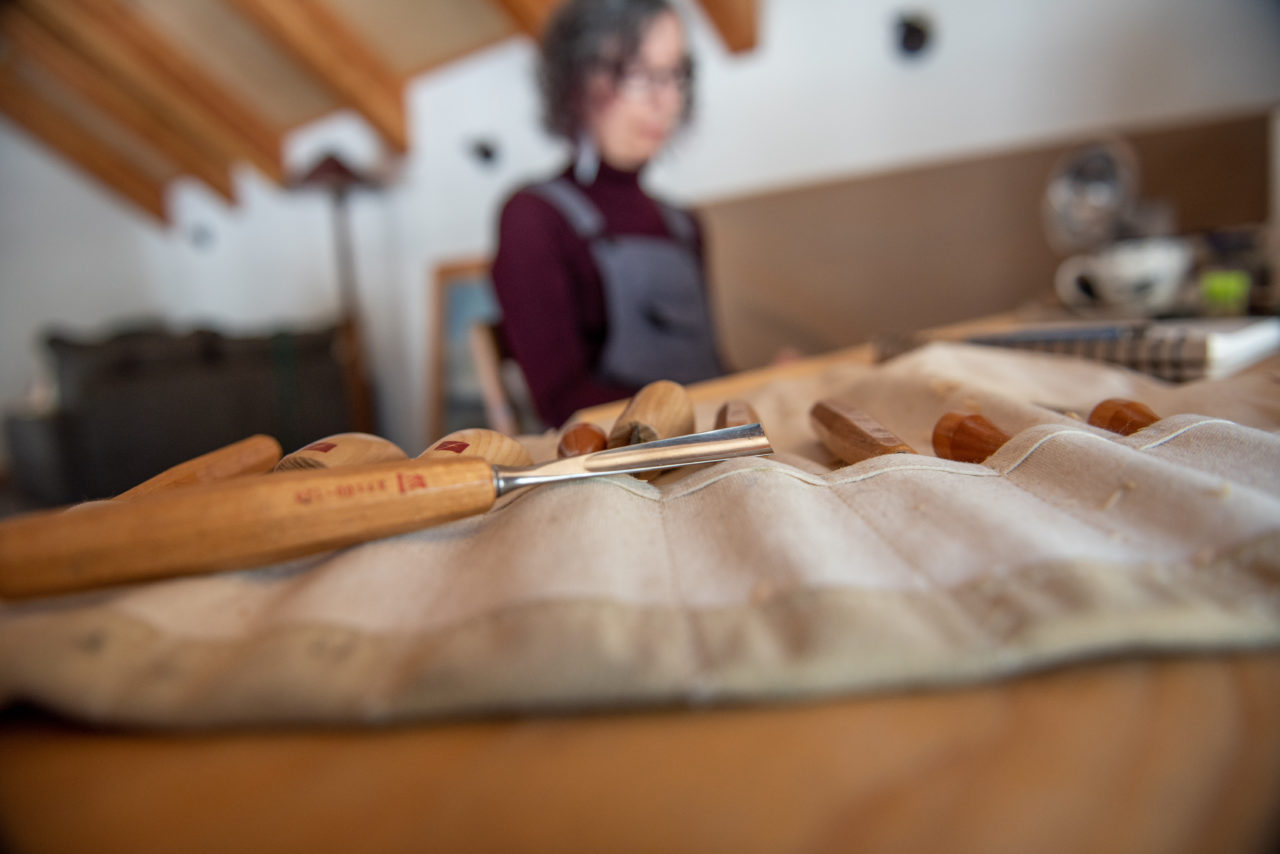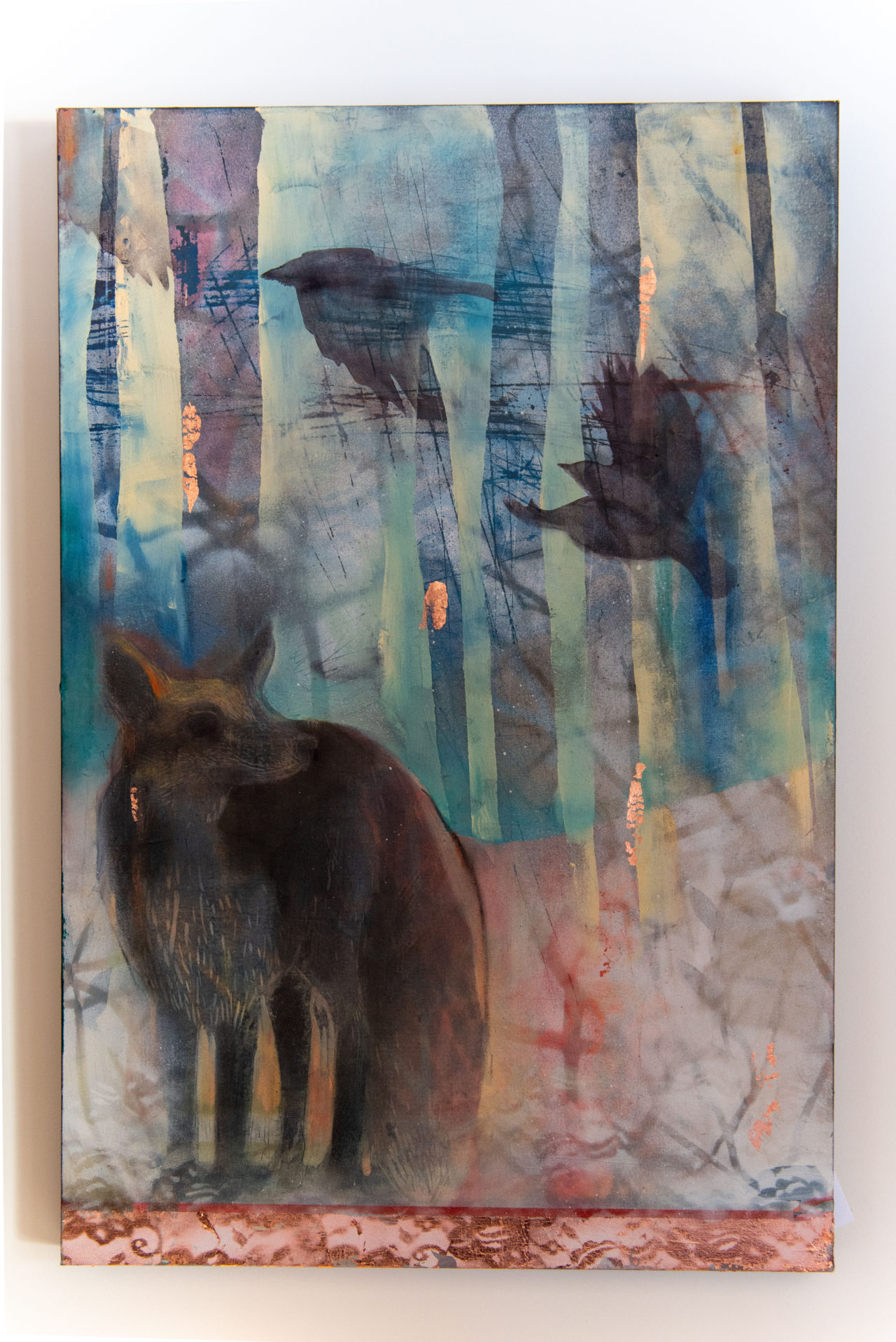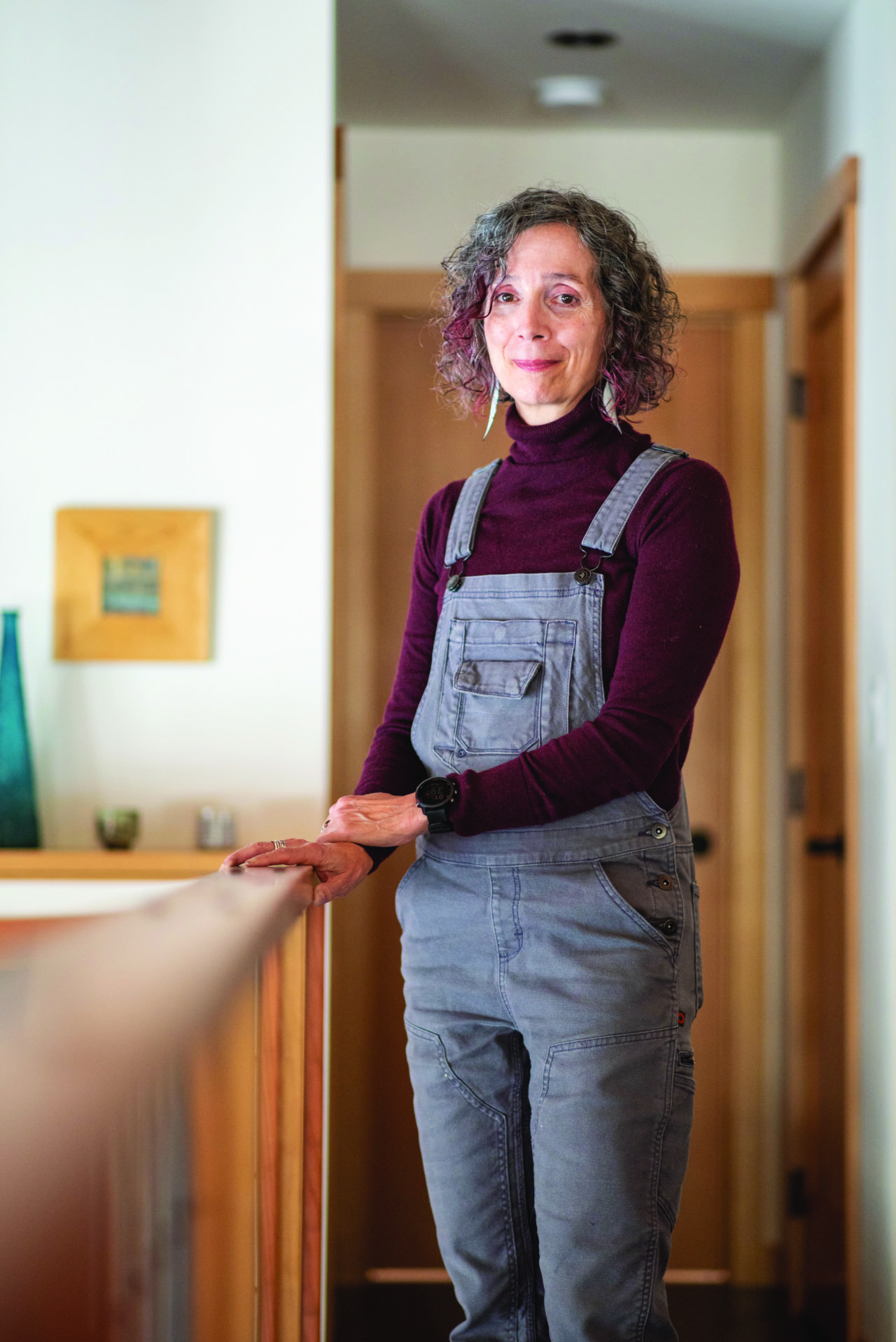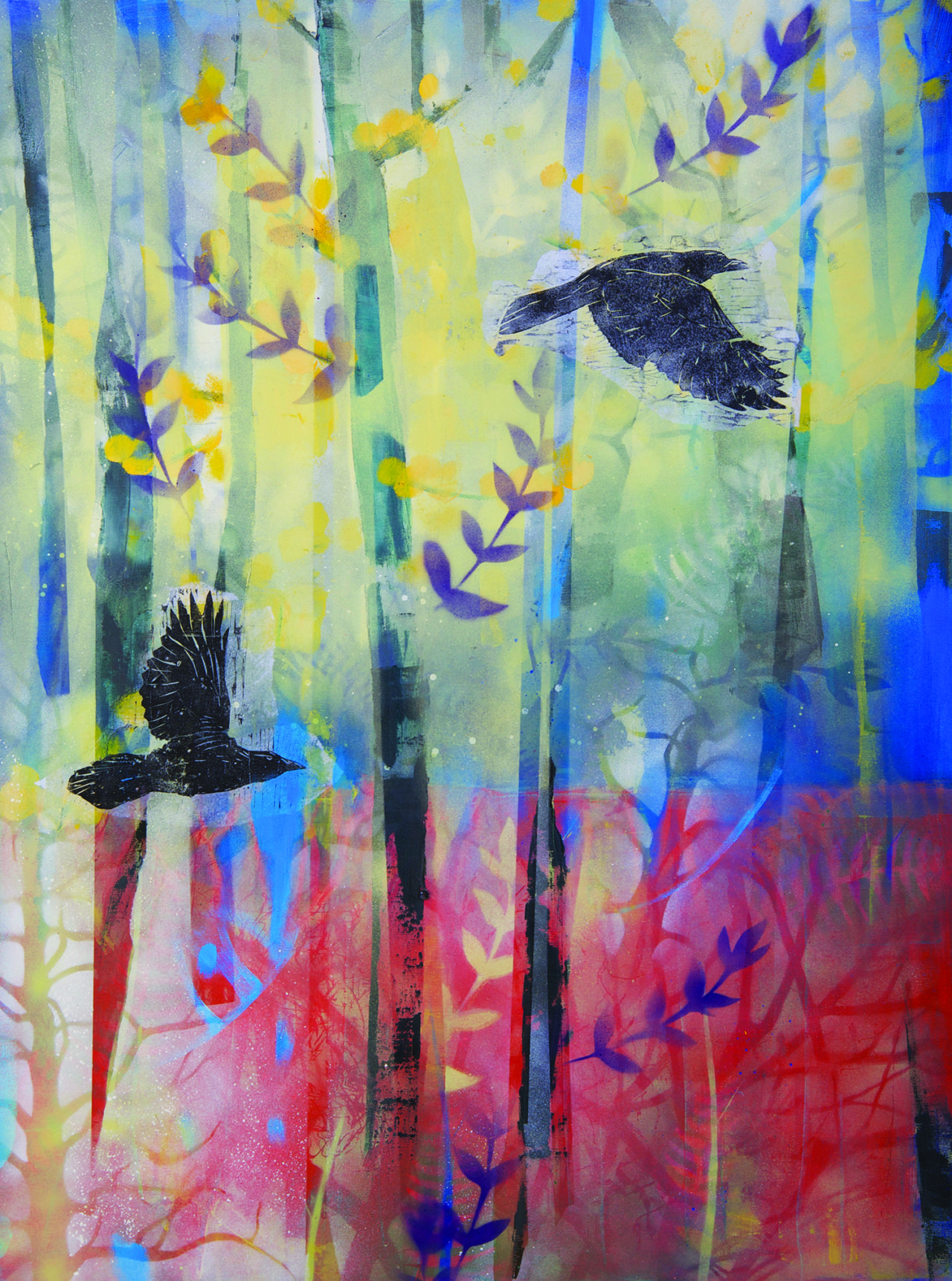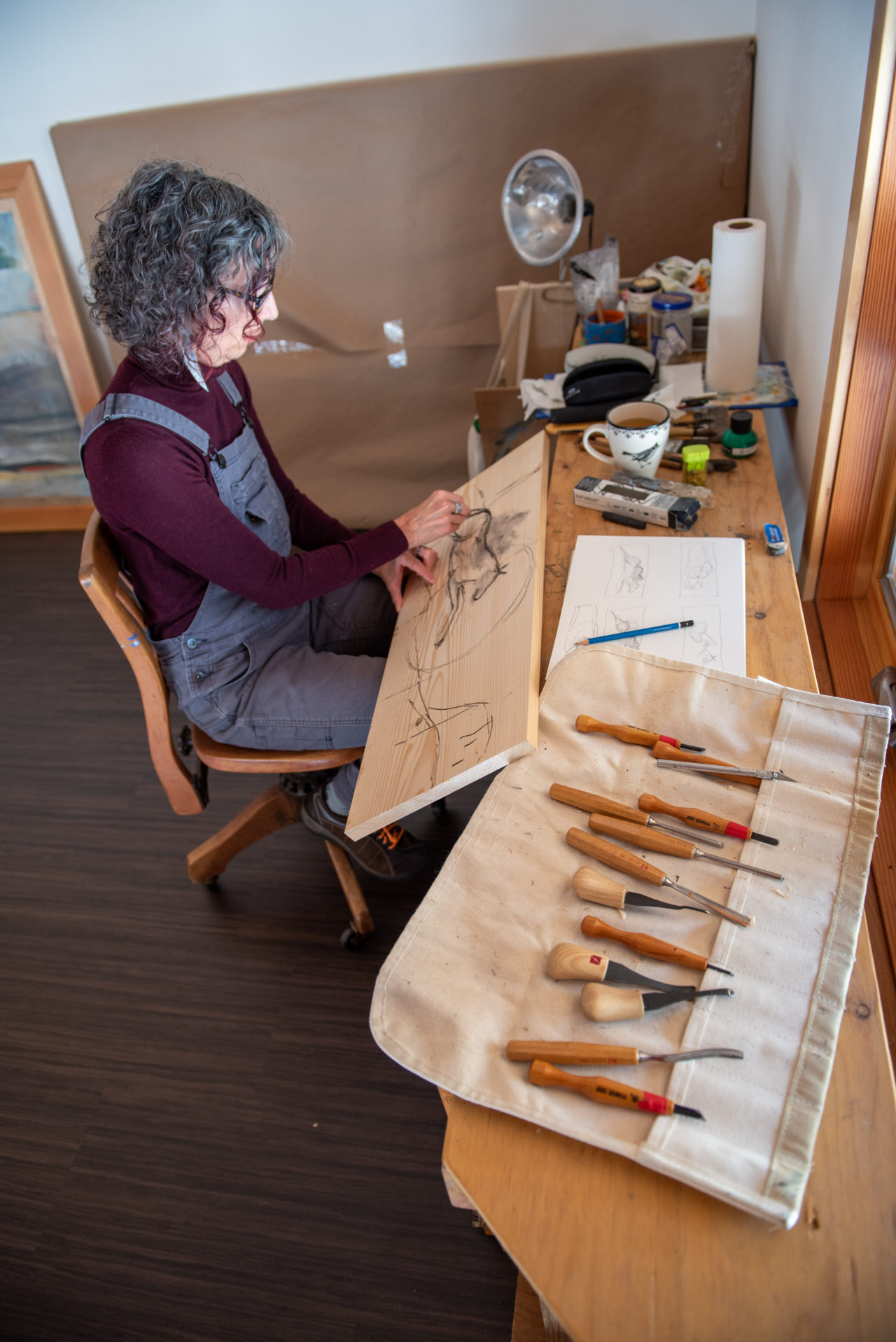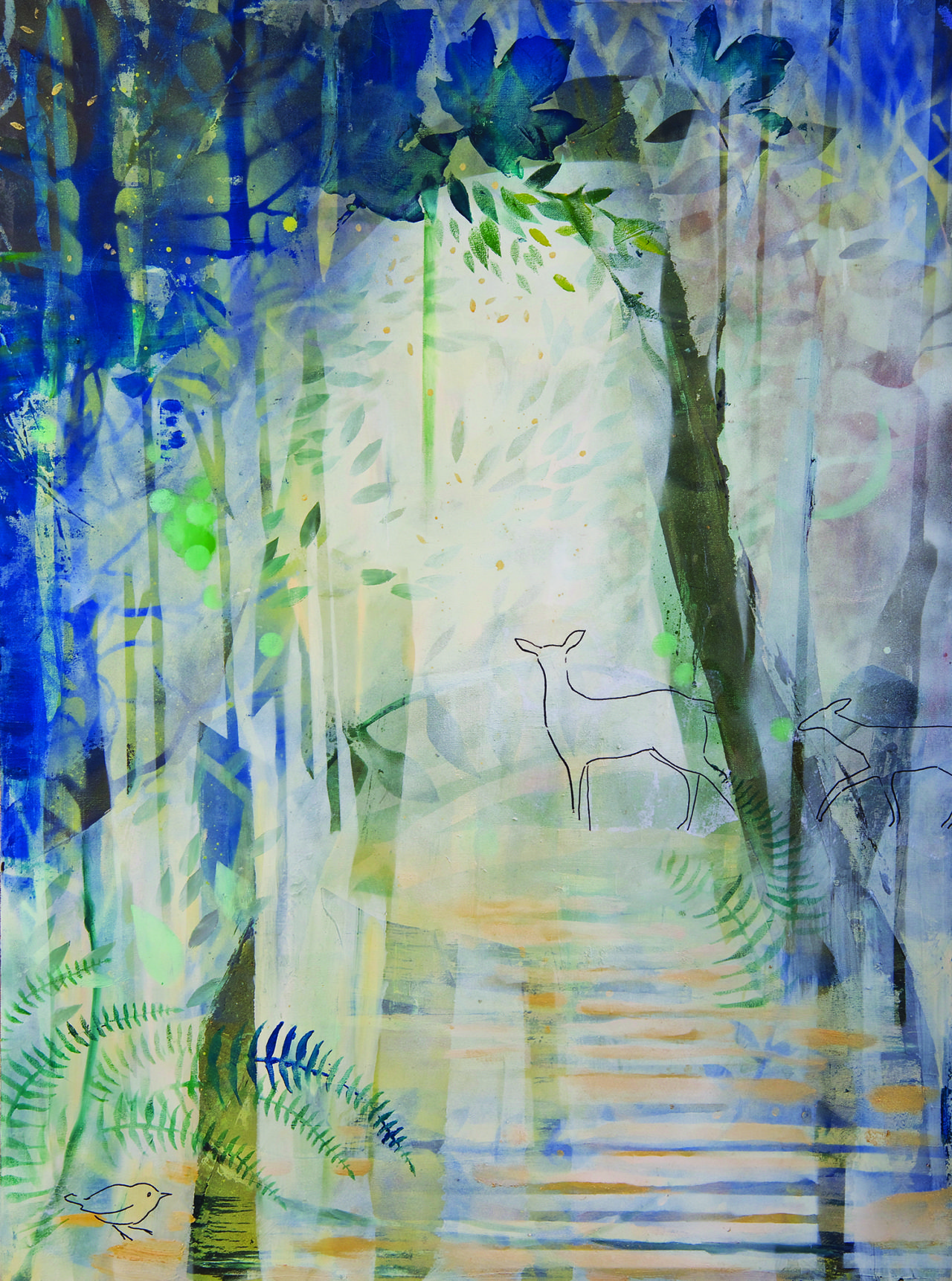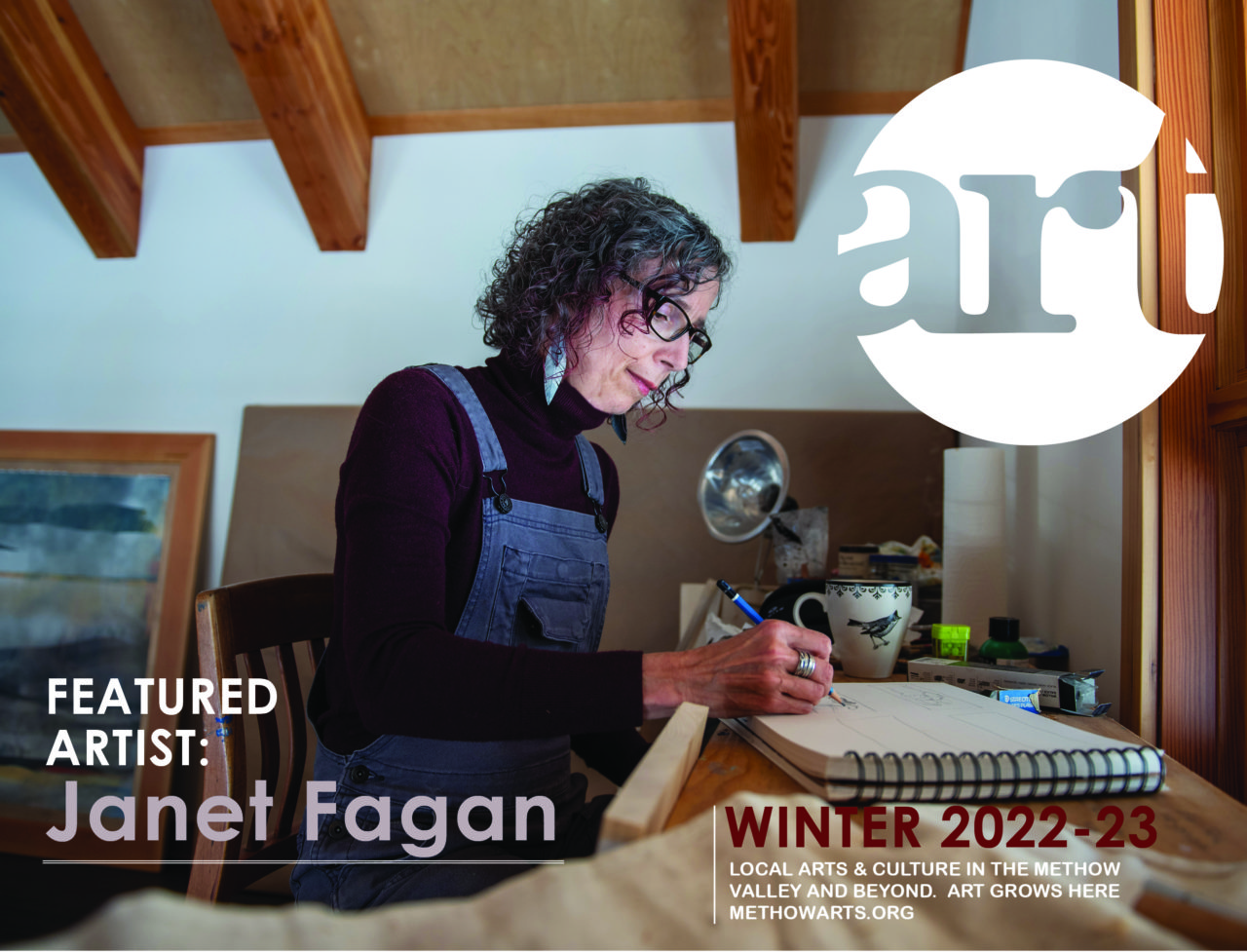
By Marcy Stamper
Photography by Stephen Mitchell
CLICK HERE TO VIEW FULL WINTER MAGAZINE
“On a painting day, I’m so excited when I wake up, because every painting is this real adventure,” said Janet Fagan, a painter, printmaker, and mixed-media artist who embeds her experience of the natural world in her art.
When creating art, Fagan is so immersed in the moment that it’s completely satisfying, she said. Although she takes a variety of approaches to artmaking, she always trusts that the process will lead to an expression of her aesthetic ideas and her reflections on the natural world.
When making art in her studio, Fagan relies on her memory and uses words, images or photos to trigger her feelings of being in nature. Although she looks at photos or sketches she’s made while running, skiing, or hiking, they aren’t studies for a painting, but instead a way to help her tap into the way she felt. “I just work with the emotional memory of it,” she said.
Rather than planning out a painting, Fagan works intuitively, allowing the materials and her feelings to guide the creative process. Often the meaning emerges in hindsight, she said. Listening to music as she creates helps her draw on emotional cues and resonance.
Fagan employs a variety of approaches when she starts a new work of art. Sometimes, she’ll close her eyes while she paints, draws, or cuts out paper shapes with scissors. “The more random I can be, the more interesting and unexpected things will come to the surface,” she said. Sometimes she puts the paper on the ground and pours liquidy acrylic paint on it, letting the paint run all over the place.
Fagan blends oils, acrylics, and ink in her art. She’ll mix oils with cold wax to achieve a milky, foggy glaze. She also uses a resist technique, where she adheres shapes she’s cut out of paper to the canvas to block the paint, and then peels it off, revealing the paper underneath. She often incorporates a woodblock print and then layers it with collage or gold leaf.
Fagan always uses multiple layers to achieve the desired complexity of her final image. It takes three or four layers before a painting even starts to take shape, and often 10 layers before a painting is complete.
In fact, when a painting doesn’t come easily, Fagan finds she likes the painting more, because the multiple layers make it more interesting and meaningful in the end. “I just have to work harder if I can’t relate to it,” she said. “I keep layering. Something will change and shift.”
Revealing the image
After the initial creative process, Fagan will sit and stare at her painting, contemplating the colors and forms, and figuring out her next steps as she searches for representational elements that emerge from the abstractions. Rotating the paper can reveal trees or mountains in the layers of paint. “I may like it better upside-down,” she said.
Creating art involves taking and giving up control, Fagan said. “I love that juxtaposition of opposites – drawing versus abstraction, layers versus transparency, texture versus washes, control versus lack of control,” she said. “Just looking at the horizon line or the sky can open your head.”
Once Fagan finds the anchor for the landscape, she’ll add a path or wildlife. In many works, a lone deer, wolf, or bear walks along the horizon.
Some paintings feature owls, quail, or chickadees, either solitary or in social groupings. Hummingbirds sip nectar from flowers against the rich hues of sky. Animals may take refuge under a tree, in the shelter of its soft, watery contours.
These are usually creatures Fagan has encountered, and her art captures the power and majesty she’s experienced. Some paintings are more abstract, where the creatures hover above a complex, layered background of vertical forms that evoke the mystery of a forest. In other paintings, rays of sunlight, delicate blossoms, and leaves emerge in gorgeous, vibrant colors.
Some paintings depict the vastness of the landscape, the deer or bears mere specks on the horizon. But in others, it’s the birds, horses, or butterflies and their personalities that take prominence.
There are also domesticated animals in Fagan’s art. Cats – Fagan shares her home with two of them – make regular appearances.
Occasionally, Fagan’s paintings include human figures. One theme that cropped up during the pandemic was a lone violinist, often playing for an audience of a cat or a bird. Fagan sees these paintings as a kind of self-portrait, capturing the absence of music in her life during the pandemic, when the band she plays in (they play bluegrass, Americana, and folk music) couldn’t meet.
Fagan tends to work on half a dozen paintings and woodblock prints at a time. Although the paintings usually have a similar theme, they all have different color palettes and moods. One may be blue and green, while another has deep reds, oranges, and browns.
“When I experiment, I try to create randomness,” she said. Still, she said, “I’m very old-school. I love drawing and will never give it up, because I just love it so much.”
Woodblock prints
In addition to her mixed-media paintings, Fagan creates woodblock prints, which necessitate more planning – she draws the image on wood and then carves it into the block. Fagan still does all her printing by hand, savoring the physicality of it.
Rather than producing an edition of identical prints, Fagan uses the woodblock to make several works of art, all different. Some are straightforward blockprints. But then, she might paint on top of her wood carving, or make a monoprint, applying paint to glass and transferring the image to paper. And the blockprints regularly migrate into her paintings.
A recent carving of a great blue heron started as a traditional black-and-white print. Then Fagan printed it on tissue paper, which she’ll incorporate as a transparent layer in a painting. “It’s different ways of looking at the same image. It’s really fun to use the same woodblock to do different things,” she said.
In Fagan’s woodblock prints, the bold, graphic strokes capture the texture of fur or feather. Sometimes there are owls, cats, and rabbits ae anchored by a simple background; at other times, they’re superimposed on trees, flowers, or sky.
Fagan finds it stimulating to have these two completely different ways of working, to balance the serendipity of her paintings with the more meticulous planning for the blockprints.
Fagan also loves circles. That passion is expressed through recurring suns and moons in her mixed-media work, and also in delicate black-and-white Japanese sumi-e ink paintings she makes on round canvases.
“The reason I make work is to communicate something to the people who buy it,” Fagan said. “I need it to find a home and be with people.”
Drawing energy from nature
Fagan has spent virtually all her life in intimacy with the natural world. She grew up in Florida before the state was built up, where she inhabited a wild landscape of saltwater, wetlands, dune lakes, and forests, and where hammerhead sharks were a daily presence. Nature and weather were omnipresent. Twice, her family home was flattened by hurricanes.
To this day, Fagan loves being by herself in nature, where she feels grounded and at peace. She backpacks and takes long-distance runs in the mountains. “Running, for me, is like a kinetic form of meditation,” she said.
“My art practice… is where my imagination communes with memory and optimism,” Fagan said.
After being based in Seattle for decades, Fagan has been splitting her time between Seattle and Mazama for the past five years. When her home studio in the valley is completed (expected by the end of 2022) and she brings her cats to Mazama, the transition will be complete.
For all the randomness of her artmaking, Fagan is exceptionally focused and disciplined. She maps out each day before she goes to bed. In fact, Fagan sets goals for the week, for six months, and for the year, and then reverse-engineers her schedule and focus to achieve them. “I can’t just stay in the moment – I assess and see what’s worked,” she said.
Fagan makes sure she devotes her best energies not only to creating art, but also to all the aspects of her career as an artist. One day, she’ll paint, while other days are devoted to administrative or marketing tasks, or to packing art for shipping.
Teaching art
In addition to creating art, Fagan has taught art throughout her career. She has often taught marginalized people or those whose voices may be suppressed, helping them use art as an outlet for self-expression and creativity.
Fagan has taught at-risk teens, people dealing with addiction, and children and adults in transitional situations such as homeless shelters. She finds it especially gratifying to see her students flourish, both through this outlet for communication and via the responses they get to their art.
Among the most meaningful jobs she’s had is teaching art to adults with dementia. Creating art enables these people to express themselves, tell stories, and to experience beauty and energy, at a time when they may no longer be able to do so in other ways, Fagan said.
Fagan thinks back to her childhood and her precious access to the world of wildness and nature, and the gift of her parents’ support for her passion for art. She remembers the box of random items she carried around to spur her imagination. She drew all the time, obsessively sketching horses and studying their anatomy, and was simply expected to entertain herself through her explorations of nature and of art.
“I’m still exactly that person, the same as at age 7,” Fagan said. “I was taught to be alone and be creative. That was so important – it fosters creativity.”
She’s committed to passing on that gift to others. “With my paintings, I want to encourage people to see the landscape from their heart, to remember the poignant times they felt outside,” she said.
Janet Fagan is a member of the Winthrop Gallery. She is featured in the “Perspectives” exhibit at Confluence Gallery in Twisp through Jan. 7, 2023. Her website is www.janetfagan.com.
CLICK HERE TO VIEW FULL WINTER MAGAZINE
